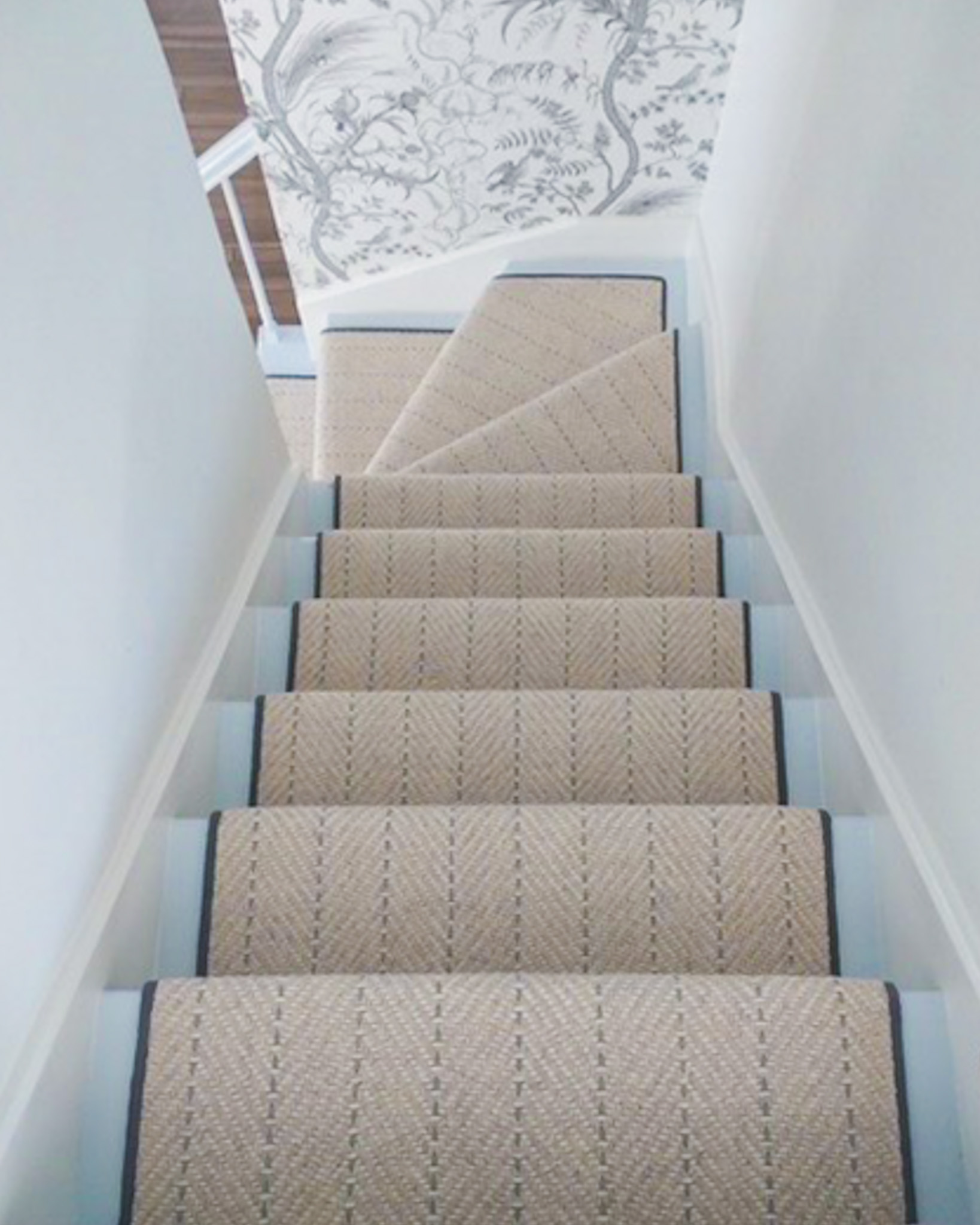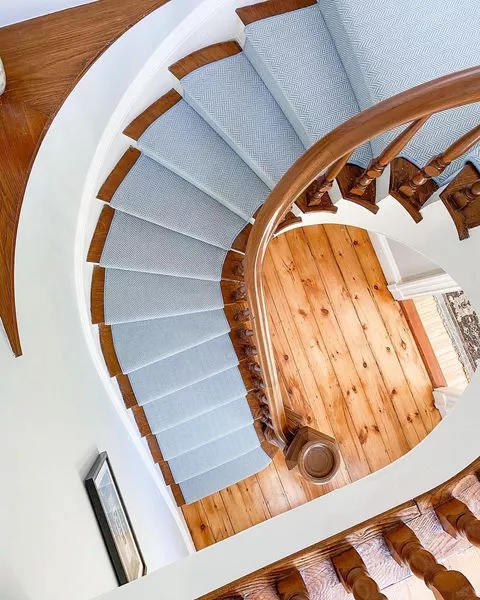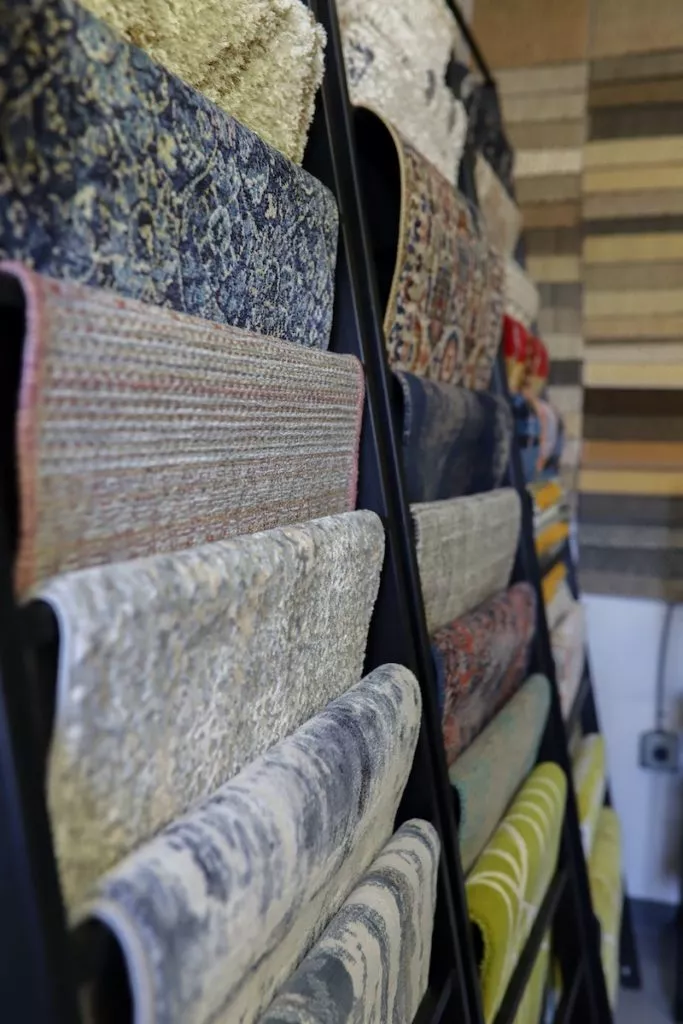An in-depth guide to creating a beautiful, functional stair runner tailored to your home
Adding a stair runner to your home isn’t just a design upgrade—it’s a smart investment in comfort, safety, and personal style. Whether you’re interested in softening wood stairs, protecting your flooring, or simply making a visual statement, customizing a stair runner gives you complete control over the final look and feel.
But unlike off-the-shelf rugs, custom runners require careful planning. From staircase measurements to material choices and installation methods, every step counts. If you’re considering a custom runner—whether you’re working with an interior designer, a carpet fabricator, or a company like The Carpet Workroom—here’s what to expect from the process.
Step 1: Assessing Your Staircase Layout
The first step in customizing a stair runner project is understanding the structure of your staircase. Why? Because the layout directly impacts everything from yardage calculations to seam placement to the final installation approach.
Common staircase types:
- Straight stairs are the simplest and most straightforward to measure and install on.
- Stairs with landings or turns (also called pie turns) require more advanced planning, especially when using patterned carpets.
- Open tread staircases may have one or both sides exposed, which could mean your runner needs finished edges along the sides too.
- Multiple flights or split-level stairs often involve connecting landings or hallways, which must be factored into design continuity and material needs.
At The Carpet Workroom, we always start with a thorough assessment of the staircase to anticipate challenges and ensure design consistency across connected spaces.
Step 2: Measuring for Precision
Once the layout is understood, precise measurements are key to ensuring a perfect fit. Incorrect measurements can lead to ordering too much or too little material—or worse, an improperly fabricated runner.
What’s typically measured:
- Tread depth and riser height on each step
- Total number of steps and any variation in dimensions
- Stair width, minus your preferred border space on either side (usually 3–5 inches)
- Landing dimensions, including angled corners or curves
- Connecting hallways if the runner is continuing beyond the staircase
Professionals often use measurement templates, especially for curved or pie-shaped stairs, to help ensure an accurate layout before cutting begins. At The Carpet Workroom, we always confirm and double-check these dimensions before fabrication.
Step 3: Choosing the Right Material
The carpet you select for your stair runner will influence its performance, durability, and design. While many styles are suited for stair applications, not all are created equal.
Material options and considerations:
- Wool is the gold standard for stair runners. It’s naturally soft, highly durable, resistant to crushing, and easy to maintain.
- Wool blends offer similar durability but at a lower cost. These often contain synthetic fibers for added performance.
- Nylon and polypropylene are solid choices for high-traffic homes and are typically more budget-friendly. They’re also a good pick if you have kids or pets.
- Flatweaves and indoor/outdoor styles are great for modern homes, warmer climates, or staircases exposed to moisture or wear.
Also consider the pile height. High-pile or plush carpets are soft underfoot but harder to wrap around stair nosing. Flatweaves or low-pile options are easier to install and often allow for tighter, more precise finishes.
Step 4: Choosing Patterns (and Understanding Pattern Flow)
One of the most exciting (and often overlooked) parts of designing a stair runner is choosing a pattern. From subtle textures to bold motifs, a pattern can completely transform the staircase.
However, when working with patterns, careful planning is critical.
What to keep in mind:
- Pattern repeat: Most patterned carpets have a set repeat length (every 18″, 24″, 36″, etc.). This affects how the design aligns from step to step, especially on longer staircases.
- Directional flow: It’s important to align the pattern so it flows consistently up the stairs. A misaligned stripe or geometric can be visually jarring.
- Mitered corners: For staircases with landings or sharp turns, mitered seams allow the pattern to flow cleanly around corners. This technique requires precision cutting and adds time to fabrication—but the end result is visually seamless and highly professional.
A carpet workroom with experience in pattern planning and custom rug fabrication, like ours, can ensure these details are handled correctly.
Step 5: Finishing the Edges
Once your runner is cut to size, the edges must be finished to prevent fraying and give the rug a polished, cohesive look. This detail can be as understated or as bold as you’d like.
Finishing options include:
- Standard binding with synthetic or cotton tape for a clean, tailored edge
- Serging, which uses a stitched yarn edge that wraps around the rug for a softer, rounded look
- Wide decorative borders, often cotton, linen, or leather, to create a dramatic or custom-tailored finish
We help clients at The Carpet Workroom match their edge finishes to their carpet and home style—whether you want something neutral and subtle or a high-contrast detail.
Step 6: Choosing an Installation Style – Waterfall vs. Hollywood
You’ll also choose how the runner is installed—this affects both the visual style and the functional finish.
- Waterfall installation allows the runner to fall from the tread to the riser in a smooth drop. It creates a soft, modern look and works best with plush or thicker carpets.
- Hollywood installation wraps the runner tightly over the edge (nosing) of each tread and staples it underneath. This creates a more structured, tailored appearance and is ideal for flatweaves and low-pile carpets.
Some staircases may benefit from a combination of both, depending on the turns, landings, and how the runner interacts with architectural features like railings or moldings.
Step 7: Timeline and Lead Time
Planning ahead is key when customizing a stair runner. The process involves multiple steps—material selection, measuring, fabrication, and installation—and each step takes time.
Typical lead time:
- 2–4 weeks from start to finish
- Up to 6 weeks during busy seasons or when working with complex patterns, mitered corners, or backordered materials
At The Carpet Workroom, we’re transparent about timelines and always provide updates during each phase. For clients working toward a move-in date or holiday deadline, we recommend getting started at least a month in advance.
Final Thoughts: A Custom Runner Is an Investment in Style, Safety, and Comfort
Customizing a stair runner may involve more decisions and steps than buying one off the shelf—but the payoff is worth it. You get a runner that fits your staircase perfectly, reflects your design taste, and performs well for years to come.
With the help of experienced professionals, the process becomes both creative and manageable. At The Carpet Workroom, we guide clients through each phase, from measuring and material selection to fabrication and final installation. Our team handles everything in-house, so you can trust that your stair runner is made with precision, care, and attention to every detail.
Ready to create a runner that fits your home beautifully?
Visit our showrooms in Needham or Stoughton to browse materials, see samples in person, and speak with a member of our team. Or simply email us at info@carpetworkroom.com to get started.
Whether you’re customizing your first runner or upgrading an existing staircase, we’re here to help you every step of the way.



